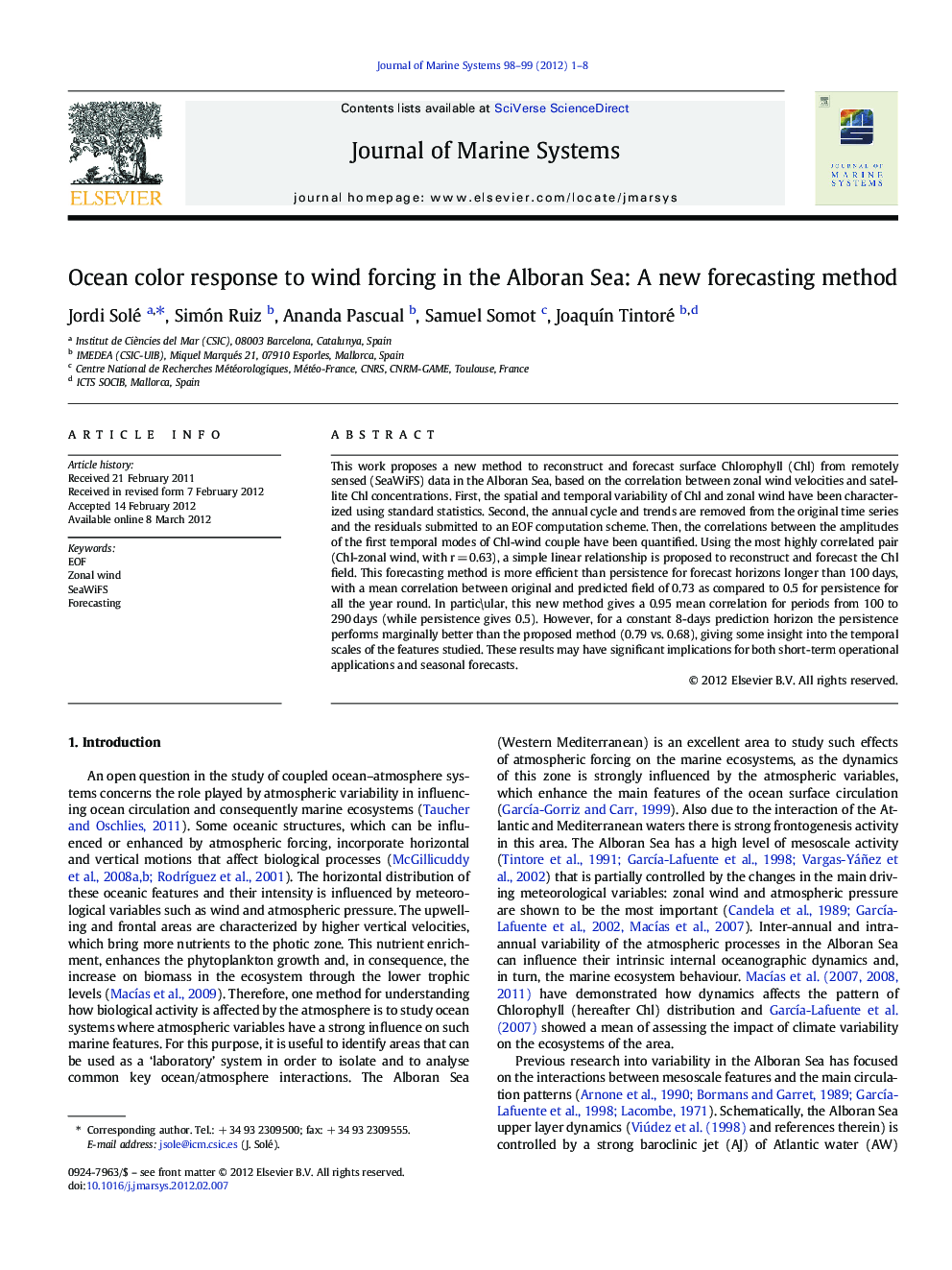| Article ID | Journal | Published Year | Pages | File Type |
|---|---|---|---|---|
| 4548282 | Journal of Marine Systems | 2012 | 8 Pages |
Abstract
This work proposes a new method to reconstruct and forecast surface Chlorophyll (Chl) from remotely sensed (SeaWiFS) data in the Alboran Sea, based on the correlation between zonal wind velocities and satellite Chl concentrations. First, the spatial and temporal variability of Chl and zonal wind have been characterized using standard statistics. Second, the annual cycle and trends are removed from the original time series and the residuals submitted to an EOF computation scheme. Then, the correlations between the amplitudes of the first temporal modes of Chl-wind couple have been quantified. Using the most highly correlated pair (Chl-zonal wind, with r = 0.63), a simple linear relationship is proposed to reconstruct and forecast the Chl field. This forecasting method is more efficient than persistence for forecast horizons longer than 100 days, with a mean correlation between original and predicted field of 0.73 as compared to 0.5 for persistence for all the year round. In partic\ular, this new method gives a 0.95 mean correlation for periods from 100 to 290 days (while persistence gives 0.5). However, for a constant 8-days prediction horizon the persistence performs marginally better than the proposed method (0.79 vs. 0.68), giving some insight into the temporal scales of the features studied. These results may have significant implications for both short-term operational applications and seasonal forecasts.
Keywords
Related Topics
Physical Sciences and Engineering
Earth and Planetary Sciences
Oceanography
Authors
Jordi Solé, Simón Ruiz, Ananda Pascual, Samuel Somot, JoaquÃn Tintoré,
